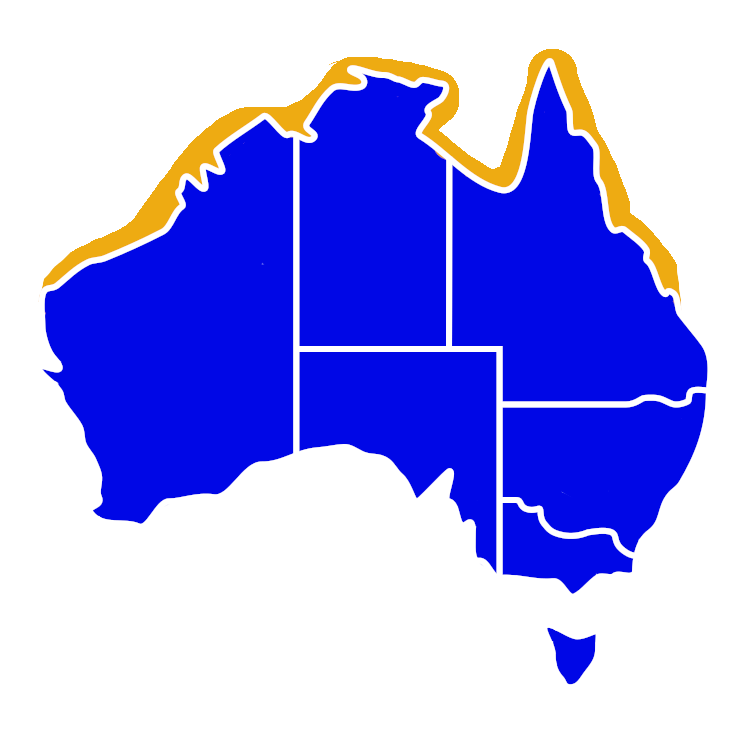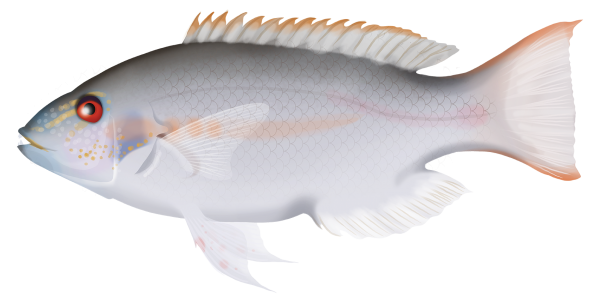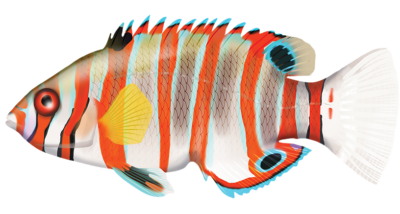Quick Facts
Distribution

Interesting Info
- The Redstripe Tuskfish is a species of marine fish that is found in the coastal waters of northern Australia from Western Australia, Northern Territory and Queensland.
- They are aptly named for their appearance. They are known for their distinctive coloration: a rich blue body overlaid with a pattern of red or pink stripes that run vertically. They also have protruding teeth that resemble “tusks,” which give the species its common name.
- They are omnivorous and have a varied diet that includes small invertebrates, crustaceans, molluscs, and sometimes algae.
- The Redstripe Tuskfish is an interesting species to observe in the wild due to its unique foraging behaviour. They are known to use their ‘tusks’ to dig in the substrate for prey, and have even been observed using rocks as tools to crack open shells.
- They are known to be relatively solitary, and while they may be seen in pairs or small groups, they typically hunt and live alone.
- During the night, Redstripe Tuskfish often wedge themselves into crevices in the reef. This behaviour provides them with protection from predators while they rest.
- Tuskfish, as a group, generally have a spawning season, which may vary depending on the region. They usually spawn in groups, and the female’s eggs are fertilised externally in the water column.
- Estimated lifespan is up to 20 years.
Species Interaction
Recreational Fishing, Snorkeling & Diving
Redstripe Tuskfish are are occasionally targeted by recreational fishers. Their strong teeth can prove a challenge, as they can easily break fishing lines. Observing them in the wild can be challenging, as they are not a schooling fish, but with patience and careful observation, snorkelers and divers can have a good chance of encountering them. Look for them in coral reef areas and near rocky outcrops.
Scientific Classification
Kingdom: Animalia
Phylum: Chordata
Class: Actinopterygii
Order: Perciformes
Family: Labridae
Genus: Choerodon
Species: Choerodon vitta
Conservation Status
The conservation status of the Redstripe Tuskfish in Australia is listed as “Least Concern” on the IUCN Red List of Threatened Species, meaning that it is not currently considered to be at risk of extinction.
Fish Taste Quality
Redstripe Tuskfish are considered to be a high-quality table fish with firm, white flesh and a mild flavour.
Taste Rating: 3/5
How to catch
Redstripe Tuskfish
Catch Difficulty: Intermediate
Tackle: Running Sinker Rig
Bait: Crab, Fresh cut flesh baits, Pilchards, Prawns, Shellfish, Squid, Worms, Yabbies
Technique: Keep bait close to the reef/structure
Popularity: Popular
Recreational Viewing
- Snorkeling & Scuba
Finding: Intermediate
Temperament: Peaceful
Location: Inner Reef, Outer Reef, Lagoon
Danger: None





